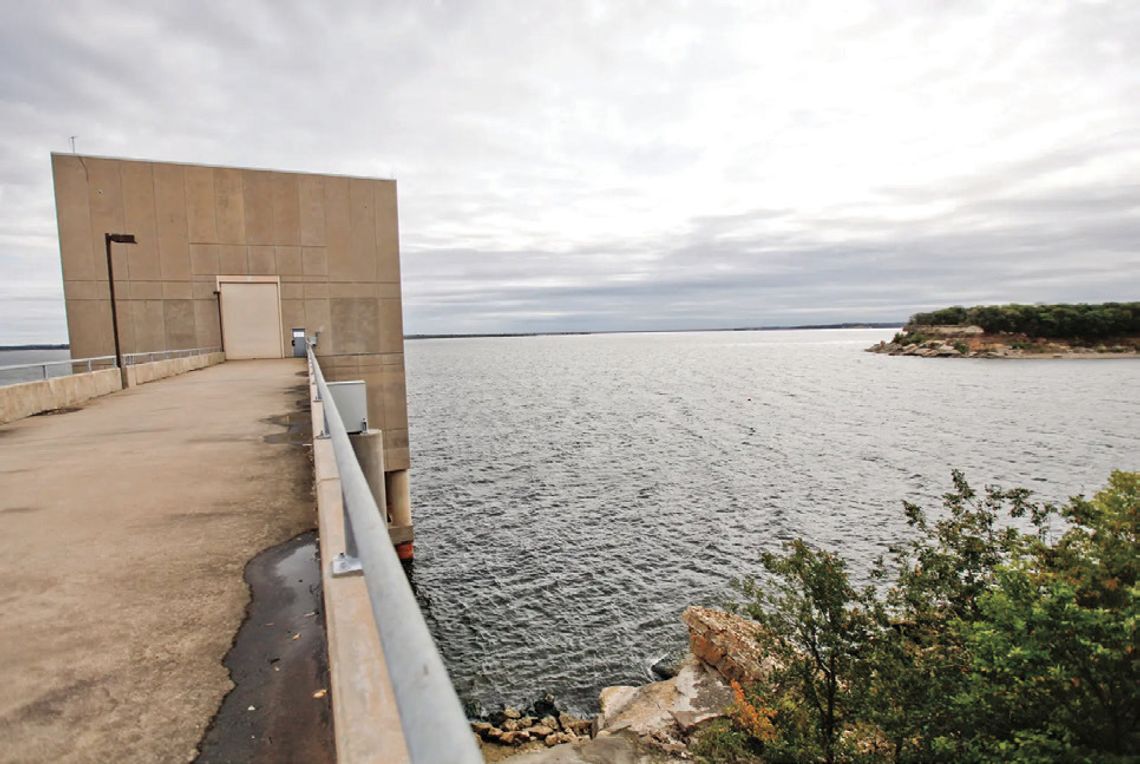Texas just altered its border with Oklahoma. Well, a small sliver of it, anyway. And, no, Texas didn’t become any bigger.
After years of dispute over how the boundary between Texas and Oklahoma should be drawn at the Red River, the two states reached an agreement last month that shifted Texas’ northern border just slightly, Texas Land Commissioner Dawn Buckingham announced on Thursday.
The problem began in 2009 when the North Texas Municipal Water District, which provides water to several Dallas-area cities, learned about invasive zebra mussels in Lake Texoma, where it was operating a water pump station.
That raised the question of whether the pump station was in Texas, or in Oklahoma. Federal law prohibits transporting zebra mussels across state lines. The North Texas water district paused pumping to avoid violating federal law. And Texas began investigating which state exactly the pump station sat in.
The state found that the pump station was within Texas borders when it was built in 1989. But a new boundary established by Texas and Oklahoma in 2000 — the vegetation line along the south bank of the Red River — meant that part of the station now sat in the state’s northern neighbor.
In 2021, Texas sent Oklahoma a proposal for a new boundary that would ensure the station lived wholly in Texas. After years of discussion, the two states finally reached an agreement on how the boundary should be drawn. The Texas and Oklahoma Red River Boundary Commissions executed the new border on Oct. 30.
“This redrawn boundary line will ensure that millions of north Texans' water comes from a secure source in Texas,” Buckingham said.
Texas and Oklahoma exchanged approximately 1.34 acre of underwater land, or about a football field each. Neither of the states grew or shrunk — if either state had gotten bigger, approval from the U.S. Congress would have been required.
The North Texas Water Municipal District also agreed to pay Oklahoma $10 million for water projects that benefit North Texas and up to $800,000 to cover the University of Oklahoma’s legal, engineering and surveying fees related to the boundary, the water district said.
The swapped land is controlled by the U.S. Army Corps of Engineers, which is responsible for Lake Texoma. The lake serves as the primary water source for all of Sherman and Denison, two cities in North Texas, according to the North Texas water district.
The Texas General Land Office said that the new boundary would ensure the availability of around 30% of the drinking water supply for more than 2 million people in the area.
The final agreement, which maps will be updated to reflect, closes the latest chapter of controversy over the Texas-Oklahoma border, which was the subject of long-running disputes throughout the 19th and 20th centuries.
After the Louisiana Purchase of 1803, the Red River served as the boundary between the United States and Mexico, and, after the Texas Revolution, between the United States and Texas.
But as the size of the river waxed and waned through natural processes, federal treaties created Indigenous reservations and oil was discovered in North Texas, the actual site of the border became the subject of an ongoing turf war with the federal government, Texas, Oklahoma and Indigenous peoples all laying a stake in the matter.
The U.S. Congress passed the Red River Boundary Compact in 2000, based on legislation signed by then Texas Gov. George W. Bush and Oklahoma Gov. Frank Keating establishing a permanent border marked by visible landmarks.
Twenty-four years later, thanks to zebra mussels and a water pump station, the states’ boundaries have shifted again.
.png)












